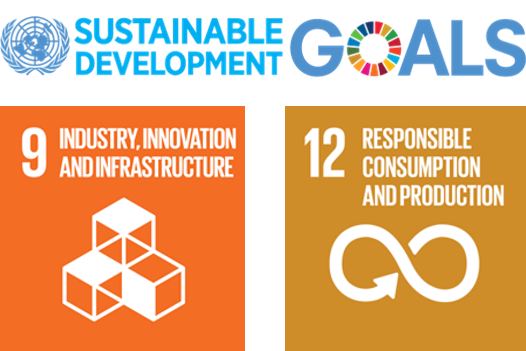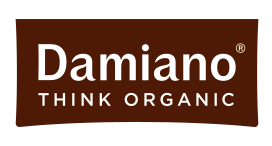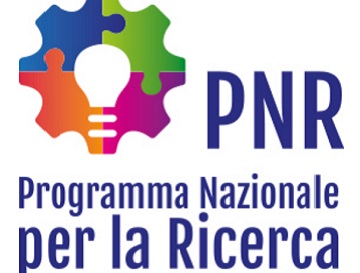LIGASH
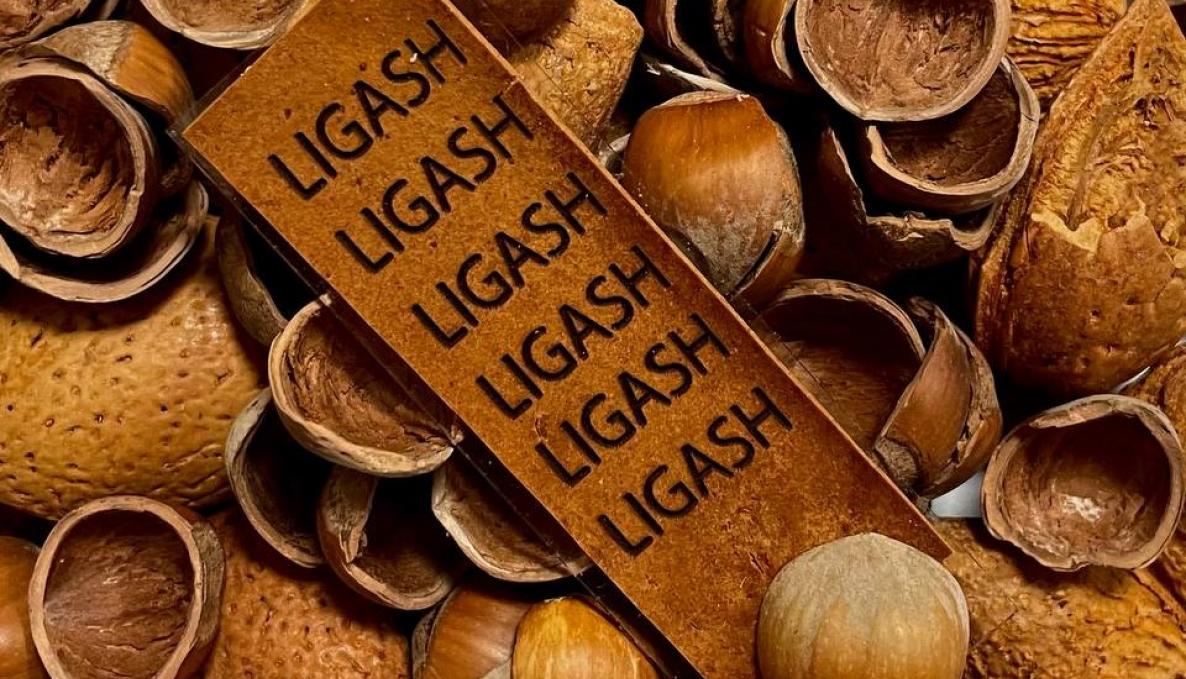
Project direction
The LIGASH (Laser Induced Graphene from Almond and Hazelnut Shells) project is focused on creating sustainable almond and hazelnut shell composites for green laser graphene for further applications in green electronics.
This project aims to address two of the UN Sustainable Development Goals: SDGs 9 and 12. Indeed with the rapid growth in the use of electronic devices, environmental problems have become global and there is a need to develop new "green electronics". In addition, a current challenge of our society is to look for new ways to dispose of waste and residues of agricultural processes, by turning them into useful resources with several advantages. In LIGASH we integrate biowaste to produce biodegradable and biocompatible materials to be used in electronics. Almond and hazelnut shells are considered raw materials (bio-waste) to be mixed with naturally derived and renewable polymers. The high content of lignin in the shells makes them and the resulting composites ideal precursors for laser-induced graphene (LIG). LIG is a 3D porous and conductive carbon structure produced by localized pyrolysis by laser scribing with an IR laser. Synthesis and patterning of LIG is an economical one-step process that avoids the use of chemicals and the need for prolonged exposure to high temperatures. As a practical result, conductive LIG circuits, sensors, and electrodes can be scribed on renewable composites.
Project stages
1 - Creation of bioderived and biodegradable composites based on almond and hazelnut shells using a chitosan matrix (bioderived polymer)
2 - Laser scribing and obtaining high-quality graphene
3 - Creation of electrodes and circuits for further integration into green electronics
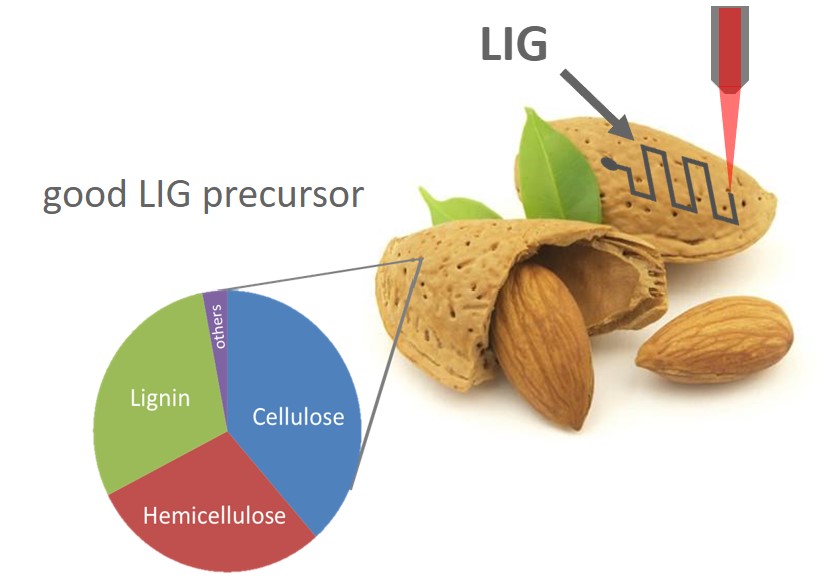
Main achievements
At the moment, a process has been developed and optimized for obtaining flexible and strong composites with a high content of almond shell powder and hazelnut shell powder, which served as good precursors for the creation of LIG with a sufficiently low surface resistance suitable for most of the intended applications of green electronics.
Funding & Industrial partner
The LIGASH project is funded by MUR (Italian Ministry of University and Research) in the framework of PNR (Programma Nazionale della Ricerca) according to EU Rules n.241/2021 and with PNRR 2021-2026, measure: public-private partnering finalized to "problem-driven" projects focused on main themes of EU program and coherent with PNR.
This research initiative is carried out with the participation and co-funding of DAMIANO Organics SpA (Torrenova, (ME) https://www.damianorganic.eu), the world leader in the processing, packaging, and distribution of organic almonds (and organic dried fruits in general). For a few years, Damiano has also dealt with organic growing almonds in almond groves located in the southern provinces of Sicily: Caltanissetta, Syracuse, and Agrigento.
